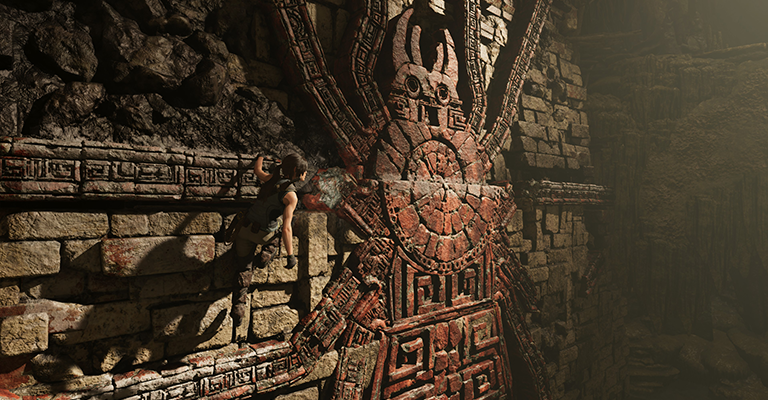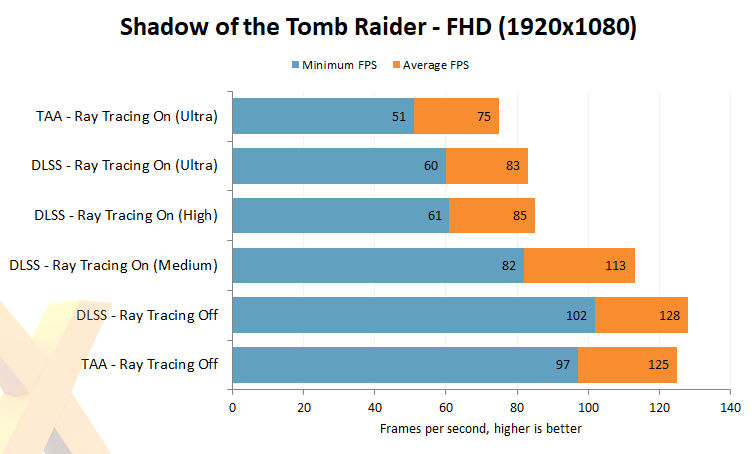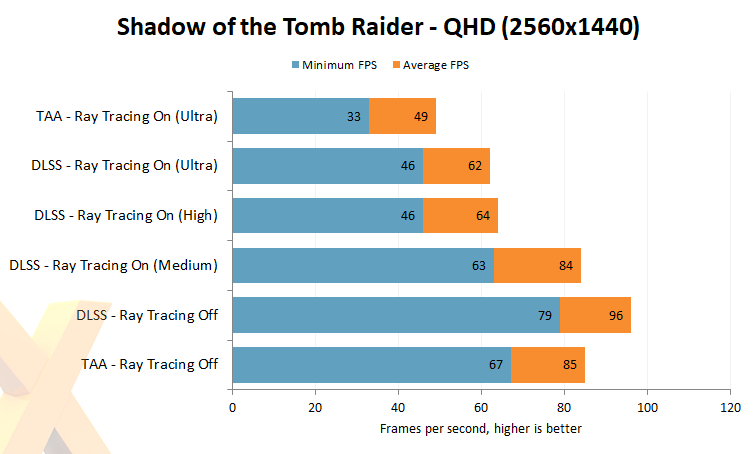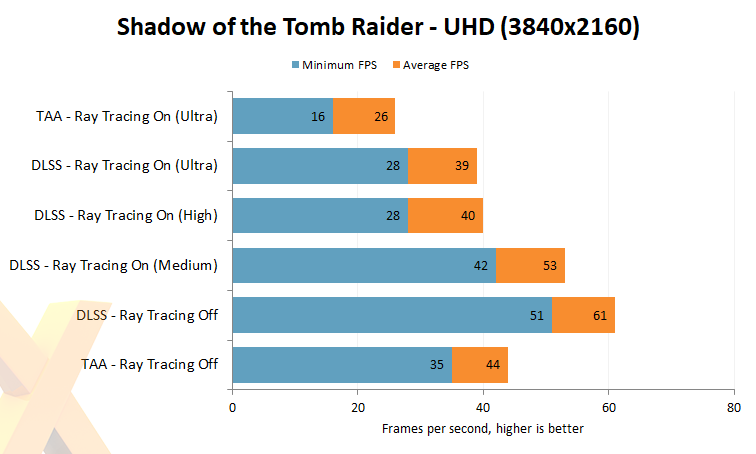RTX Ray Tracing: Shadow of the Tomb Raider
 |
Lara Croft is back in an epic adventure that takes you through Mesoamerica to the lost city of Paititi. In Shadow of the Tomb Raider you can expect mesmerising landscapes to traverse, plenty of weapons to master, and of course, as one of the first games to support ray-traced shadows, this is an ideal title for testing your new GeForce RTX hardware.



It's worth investigating how RTX-specific features such as DLSS and ray tracing hold up for this second-rung gaming card. RTX-optimised titles exact varying tolls on performance, depending upon just how much of the scene benefits from real-time ray tracing.
Shadow of the Tomb Raider is one of the easier engines for GeForce RTX, because its improvements are limited to shadows. From looking at how it works compared to running straight-up rendering, we reckon that only the ultra ray tracing preset makes sense: high and medium don't provide enough of a discernible quality difference to be worth it. On the point of DLSS, it's certainly at least as good as TAA, visually.
As before, we have run a number of different configurations to showcase how either raytracing or DLSS impact upon performance, be it positive or negative.
We have mentioned that this card should be thought of as a premium QHD offering. To that end, running DLSS and ultra-quality settings works really well. If you are going to run raytracing, you might as well combine it with DLSS and use the ultra preset, which still gives QHD60.


